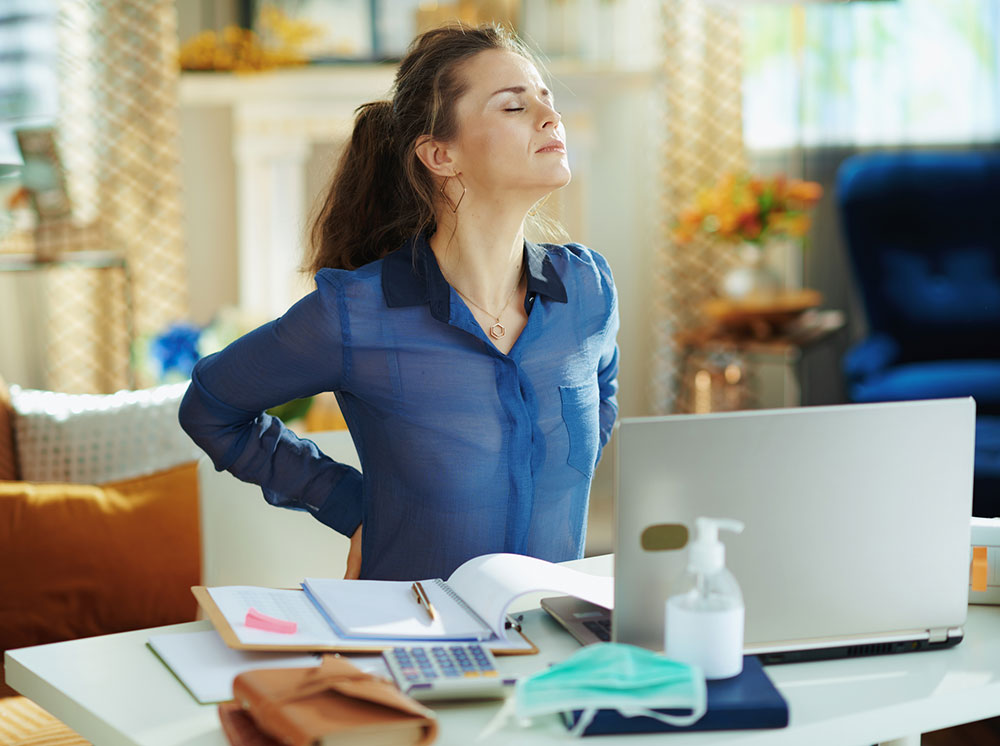
Home Ergonomics While Working Remotely
 Whether it has been voluntary or required by a shelter-in-place order, many of us have found ourselves “working remotely” in the comfort of our own home at some point. You may have a dedicated home office setup in your home, possibly at the kitchen table or the sofa. It is just as important to pay attention to the ergonomic set up for work you do outside of the office.
Whether it has been voluntary or required by a shelter-in-place order, many of us have found ourselves “working remotely” in the comfort of our own home at some point. You may have a dedicated home office setup in your home, possibly at the kitchen table or the sofa. It is just as important to pay attention to the ergonomic set up for work you do outside of the office.
Work Surface Height
If you find yourself consistently working from home, choose a dedicated area to set up ergonomically. Place your device at a height where elbows are level with the spacebar of the keyboard. This becomes difficult when using a tablet or laptop because of the screen height. If using a laptop for extended periods (over 30 minutes), elevate the device on two reams of paper or a monitor riser and use an external keyboard and external mouse. If your couch is your comfort haven, place a pillow on your lap under the device to elevate the screen a bit and open the monitor portion to a wider angle for more comfortable viewing.
Posture Follows Vision
Whether checking emails on your phone, tablet or laptop, if the screen is below eye level, your head will follow your vision. Lock your elbows into your side and view the phone screen by bending your elbows and bringing the device up towards your head. If sending emails or texts on your smart phone, use the
‘talk-to-text” microphone feature and dictate your message to reduce neck bending and texting thumb. Using a headset, whether Bluetooth or earbud cords, prevents a stiff neck. Be sure you look the text over before you send because of that pesky ‘auto correct’ feature!
Have a Decent Chair
A card-table chair isn’t ergonomic, no matter how many pads you place on the seat. Find an office chair that is comfortable, easily adjustable and rolls up to that kitchen table. The office chair may not be appropriate for dinnertime, but it will make conducting business from home more comfortable. Remember to sit back against the backrest and avoid the temptation to slouch.
Keep Moving
Keep track of the amount of sitting you do throughout the day. There is ‘occupational’ sitting and ‘leisure’ sitting. Occupational sitting is the sitting time at work, at your computing device. Leisure time sitting is after work, while binge-watching your favorite TV series, reading a book, candy crushing, etc. There are health risks from the total amount of combined sitting done in the day (at work and at home). Change your posture often and remember that your best position is your NEXT position. Switch tasks, get up and move around, set the timer on your device to remind you to get up, or alternate sitting with standing. Studies on the health effects from TOTAL sitting time are raising concerns over our sedentary work habits and lifestyle (Rempel, 2018). For those of us who fidget, research is showing that it may be a protective factor for cardiovascular health because our legs are moving and that increases circulation.
